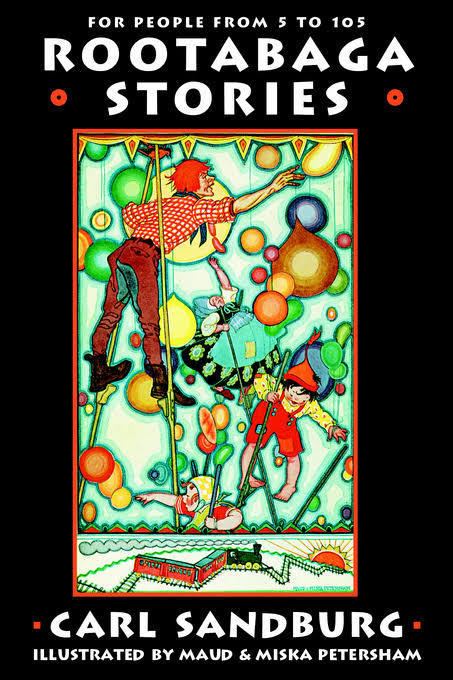8.4 /10 1 Votes8.4
Originally published 1922 | 4.2/5 Goodreads | |||||||||||||||||||||||||||||||||
 | ||||||||||||||||||||||||||||||||||
Similar Carl Sandburg books, Classical Studies books | ||||||||||||||||||||||||||||||||||
Part 1 rootabaga stories carl sandburg
Rootabaga Stories (1922) is a children's book of interrelated short stories by Carl Sandburg. The whimsical, sometimes melancholy stories, which often use nonsense language, were originally created for his own daughters. Sandburg had three daughters, Margaret, Janet and Helga, whom he nicknamed "Spink", "Skabootch" and "Swipes" -those nicknames occur in some of his Rootabaga stories. The "Rootabaga" stories were born of Sandburg's desire for "American fairy tales" to match American childhood. He felt that the European stories involving royalty and knights were inappropriate, and so set his stories in a fictionalized American Midwest called "the Rootabaga country" filled with farms, trains, and corn fairies. A large number of the stories are told by the Potato Face Blind Man, an old minstrel of the Village of Liver-and-Onions who hangs out in front of the local post office. His impossibly acquired firsthand knowledge of the stories adds to the book's narrative feel and fantastical nature. In the Preface of the little-known Potato Face, Sandburg wrote, "it is in Rootabaga Country, and in the biggest village of that country, the Potato Face Blind Man sits with his accordion on the corner nearest the post office. There he sits with his eyes never looking out and always searching in. And sometimes he finds in himself the whole human procession."
Contents
- Part 1 rootabaga stories carl sandburg
- Christi krug reads carl sandburg s rootabaga stories 1
- Sequels
- Recordings
- Illustrated editions
- References
Sandburg went on about the storyteller, "In fact, he sometimes indicates that when he needs an animal or fool not yet seen or heard of, he can make it for himself and give it a character so it is real to him, and when he talks about it and tells its story, it is like telling about one of his own children. He seems to love some of the precious things that are cheap, such as stars, the wind, pleasant words, time to be lazy, and fools having personality and distinction. He knows, it seems, that young people are young no matter how many years they live; that there are children born old and brought up to be full of fear; that a young heart keeps young by a certain measure of fooling as the years go by; that men and women old in years sometimes keep a fresh child heart and, to the last, salute the dawn and the morning with a mixture of reverence and laughter."
Christi krug reads carl sandburg s rootabaga stories 1
Sequels
Rootabaga Stories was followed by a sequel, Rootabaga Pigeons, published in 1923. A little known volume of Rootabaga stories called Potato Face was published in 1930 by Harcourt, Brace and Company, Inc - it was not illustrated. A collection of previously unpublished stories was published as More Rootabagas in 1993 with illustrations by Paul O. Zelinsky.
